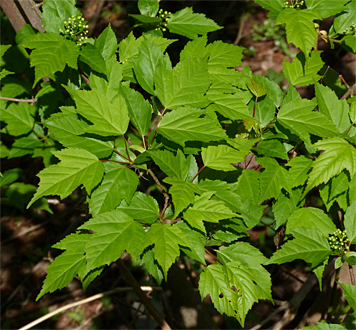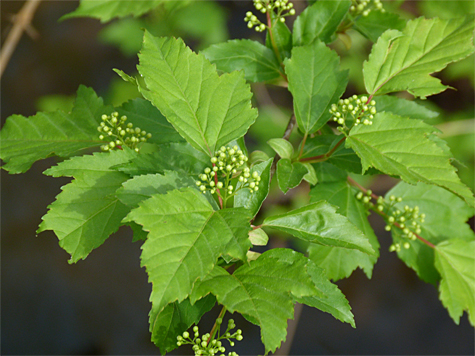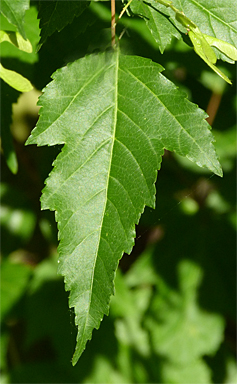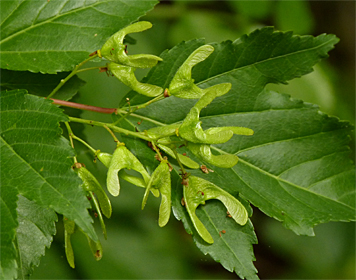Earlier this spring I noticed a small tree or shrub at the bottom of the boardwalk just as you make the turn towards the Black Bear Exhibit, where the boardwalk levels out. I didn’t know what the tree was and I don’t remember seeing it last summer. It was either a very fast growing tree or my observation skills are slipping, maybe both.

I was stumped. But there were some clues to its identity. The leaves were somewhat maple shaped. A week or two after first noticing the plant I saw that it had clusters of small flower buds or umbels ready to bloom, like a viburnum. Could this be a viburnum, a Mapleleaf Viburnum?


However, the leaves weren’t quite right for a viburnum, even a Mapleleaf Viburnum. I asked several people here at the Museum, and many Museum guests, if they had any ideas. Some ideas, some guesses, and many I-don’t-knows later I still didn’t know what the multi-trunked shrub was.
I never actually saw the flowers of the tree in bloom and with all of the other exciting springtime events going on (snakes, turtles, frogs, birds…) I forgot about the tree for a while. Then one day near the end of April I noticed seeds on the tree. This was the clincher for me. This tree had to be a maple.

I searched a few field guides and a few web sites, and came up with Amur Maple (Acer ginnala) or Siberian Maple. It grows to about 20 feet and is a popularly cultivated tree here in the United States. It shows some invasive behavior but apparently is not as invasive as, say, privet, Japanese honeysuckle, Multiflora Rose, Kudzu….
The tree as a species originated in northeastern Asia including parts of Russia, Mongolia, and China. The Amur River runs through this area of Asia. Our tree probably came in via a bird, a mammal, ants, or most likely via the wind or a load of mulch. Regardless of how it got here, it’s here and it’s not a native species. Maples, as do most trees, produce lots of seeds. It’ll be interesting to see if any more Amur Maples pop up at the Museum. There may already be some on the site, they are easy to overlook. I shall keep an eye out for them.
Have a good one…